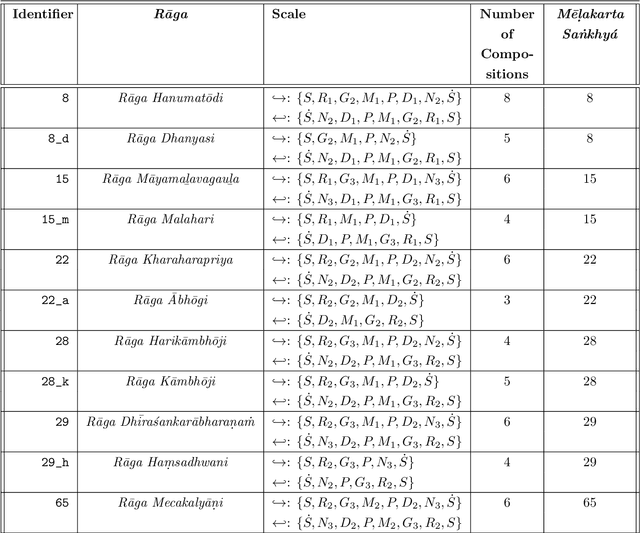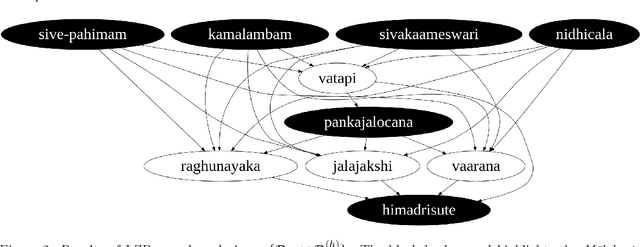Causal Analysis of Carnatic Music: A Preliminary Study
Paper and Code
Sep 24, 2021



The musicological analysis of Carnatic music is challenging, owing to its rich structure and complexity. Automated \textit{r\=aga} classification, pitch detection, tonal analysis, modelling and information retrieval of this form of southern Indian classical music have, however, made significant progress in recent times. A causal analysis to investigate the musicological structure of Carnatic compositions and the identification of the relationships embedded in them have never been previously attempted. In this study, we propose a novel framework for causal discovery, using a compression-complexity measure. Owing to the limited number of compositions available, however, we generated surrogates to further facilitate the analysis of the prevailing causal relationships. Our analysis indicates that the context-free grammar, inferred from more complex compositions, such as the \textit{M\=e\d{l}akarta} \textit{r\=aga}, are a \textit{structural cause} for the \textit{Janya} \textit{r\=aga}. We also analyse certain special cases of the \textit{Janya r\=aga} in order to understand their origins and structure better.
 Add to Chrome
Add to Chrome Add to Firefox
Add to Firefox Add to Edge
Add to Edge